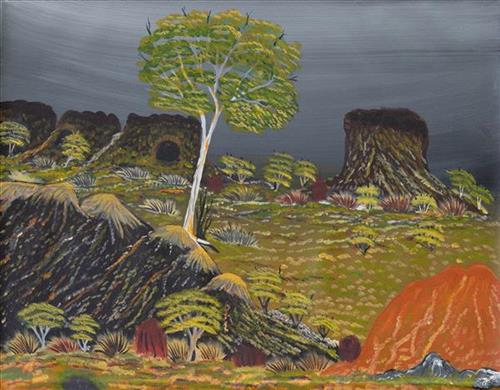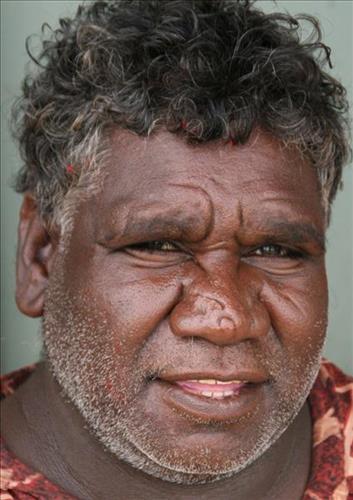111582236807
Papuly
“I was told this story by my two aunties, Nora Wompi (dec) and Nora Nungabar (dec) and my father Friday Finaly (dec) when we were driving from Punmu to Kunawarritji. They told me this later when I was a nurse in Punmu.”
– Kennedy Finlay
Papuly is a soak located just north of Kunawarritji Aboriginal community. This site lies within Wompi’s ngurra (home Country, camp), the area which she knew intimately and travelled extensively with her family in her youth.
In her account of Papuly, Wompi describes an incident from the Jukurrpa (Dreaming), when the ancestral eagle ate kangaroo at the site. The term Jukurrpa is often translated in English as the ‘Dreaming’, or ‘Dreamtime’. It refers generally to the period in which the world was created by ancestral beings, who assumed both human and nonhuman forms. These beings shaped what had been a formless landscape; creating waters, plants, animals, and people. At the same time they provided cultural protocols for the people they created, as well as rules for interacting with the natural environment. At their journey’s end, the ancestral beings transformed themselves into important waters, hills, rocks, and even constellations.
During the pujiman (traditional, desert dwelling) period, Martu would traverse very large distances annually in small family groups, moving seasonally from water source to water source, and hunting and gathering bush tucker as they went. At this time knowledge of water sources was critical for survival, and today Martu Country is still defined in terms of the location and type of water. Each of the hundreds of claypans, rockholes, waterholes, soaks and springs found in the Martu desert homelands is known by name, location, quality and seasonal availability through real life experience and the recounting of Jukurrpa narratives.




